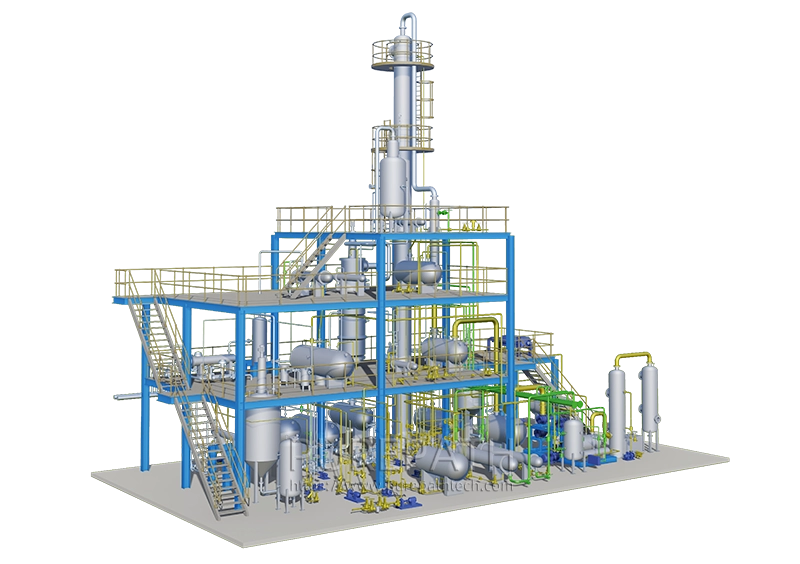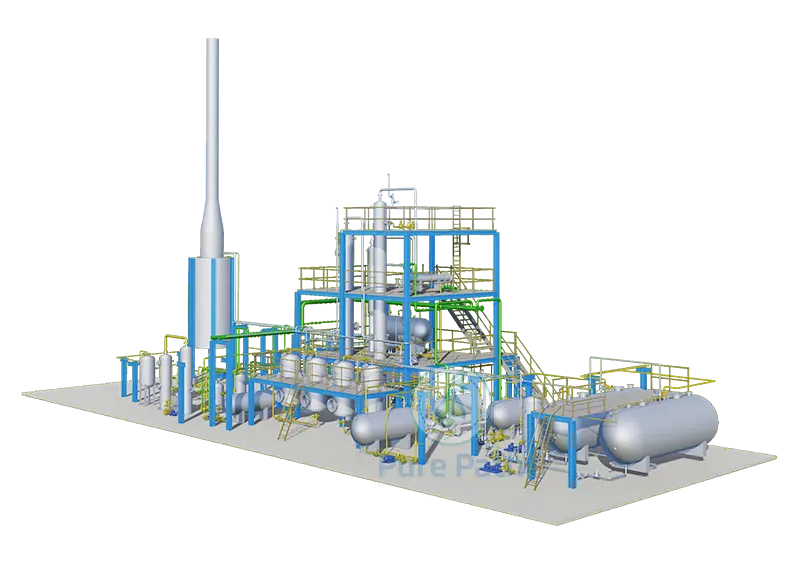Can We Convert Waste Plastic Pyrolysis Oil to Diesel?
Plastic pollution is a growing global concern. Every year, millions of tons of plastic waste end up in landfills and oceans, causing significant environmental damage. Finding sustainable solutions to manage plastic waste is crucial. One promising approach involves converting waste plastic into a valuable resource: fuel. This article explores the potential of waste plastic pyrolysis oil as a source of diesel fuel.
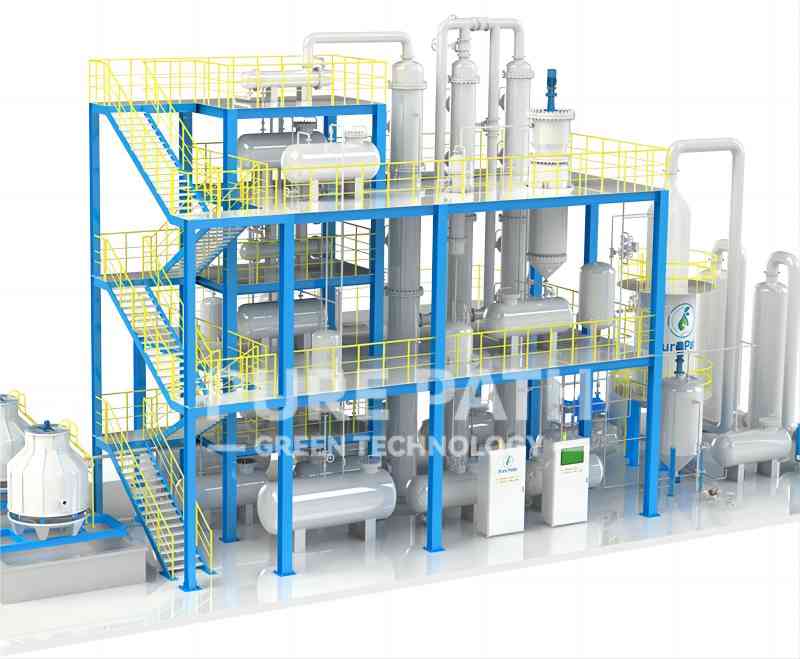
What is Waste Plastic Pyrolysis Oil?
Pyrolysis is a thermochemical process that breaks down organic materials like plastic in the absence of oxygen. When applied to waste plastic, pyrolysis yields a complex mixture of hydrocarbon liquids, gases, and solid residue. The liquid product, known as waste plastic pyrolysis oil, has attracted interest as a potential alternative fuel source.
Waste plastic pyrolysis oil shares some similarities with conventional diesel. Both are hydrocarbon-based fuels with high energy content. However, waste plastic pyrolysis oil differs from diesel in several key aspects. It typically has a higher viscosity (thickness), and a wider range of molecular chain lengths, and contains oxygenated compounds not present in diesel. These differences can lead to challenges in using waste plastic pyrolysis oil directly in diesel engines.
The Challenge of Upgrading Waste Plastic Pyrolysis Oil to Diesel
While waste plastic pyrolysis oil holds promise as a fuel source, significant hurdles exist before it can be widely used as a direct replacement for diesel. Here’s a closer look at the main challenges:
- Impurities and Inconsistency: The quality of waste plastic pyrolysis oil can vary depending on the type of plastic feedstock used for pyrolysis and the specific pyrolysis process conditions. Contaminants like metals, halogens, and sulfur compounds can be present in waste plastic pyrolysis oil, which can harm engines and pollute emissions. Additionally, the composition of waste plastic pyrolysis oil can be inconsistent depending on the plastic mix used, making it difficult to achieve a product with consistent fuel properties.
- Chemical Differences: As mentioned earlier, waste plastic pyrolysis oil has a wider range of molecular chain lengths compared to diesel. This difference can affect the combustion characteristics of the fuel, potentially leading to engine problems like incomplete combustion and increased emissions.
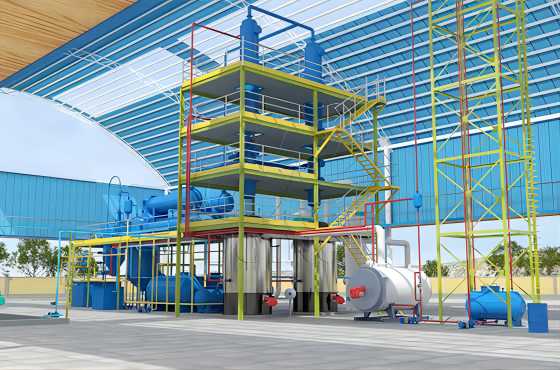
Approaches for Upgrading Waste into Diesel using a Waste Oil to Diesel Plant
While waste plastic pyrolysis oil holds promise as a fuel source, it requires further processing to become a true diesel alternative. Here’s how waste oil to diesel plants can tackle this challenge through two main approaches:
- Distillation: This process separates the complex mixture of hydrocarbons in waste plastic pyrolysis oil based on their boiling points. A waste oil to diesel plant can be used to perform this distillation. Lighter fractions with properties closer to diesel fuel can be collected, while heavier fractions can be further processed within the plant or used for other applications.
- Hydrotreating: This approach involves treating the waste plastic pyrolysis oil with hydrogen at high temperatures and pressures in the presence of a catalyst. A waste oil to diesel plant can be equipped for hydrotreating as well. This process removes impurities like sulfur and oxygenated compounds, while also cracking longer chain molecules into smaller ones. The resulting product has properties much closer to conventional diesel.
Existing Technologies and Challenges for Large-Scale Conversion
While the technology for converting waste plastic to diesel is evolving, significant challenges remain before large-scale implementation becomes a reality. Here’s a look at the current state of this technology:
- Limited Plant Capacity: Currently, only a handful of commercial plants exist worldwide that convert waste plastic to diesel. These plants typically have limited processing capacity, making it difficult to significantly impact the overall plastic waste problem.
- Economic Viability: Setting up and operating waste plastic to diesel plants requires significant investment. The cost-effectiveness of this process relies on factors like the feedstock cost, processing efficiency, and the final product’s market value. Fluctuations in oil prices can also affect the economic feasibility of this technology.
- Technical Challenges: Scaling up existing technologies for large-scale waste plastic to diesel conversion requires overcoming technical hurdles. Efficient and cost-effective methods for handling the diverse types of waste plastic are needed. Additionally, optimizing the conversion processes to ensure consistent fuel quality and high yields is crucial.
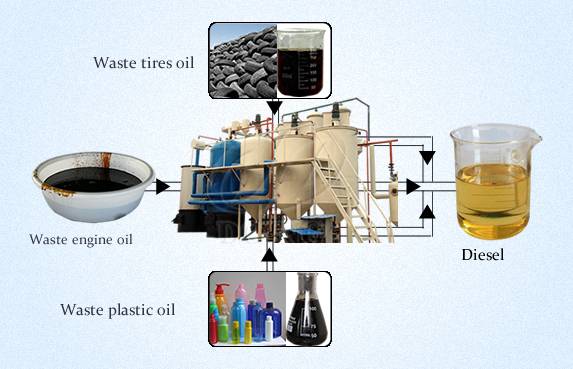
Benefits and Future Potential of Waste Plastic to Diesel Conversion
Despite the challenges, converting waste plastic to diesel offers several potential benefits:
- Waste Reduction: This technology provides a valuable pathway for diverting plastic waste from landfills and the environment. By creating a market demand for waste plastic, it can incentivize better waste collection and sorting systems.
- Alternative Fuel Source: Waste plastic pyrolysis oil derived diesel can potentially reduce dependence on conventional fossil fuels. This can contribute to energy security and potentially lower greenhouse gas emissions, depending on the overall life cycle analysis of the process.
Looking ahead, several promising areas of research hold the key to unlocking the full potential of waste plastic to diesel conversion:
- Advanced Catalytic Processes: Developing more efficient and cost-effective catalysts can improve the conversion efficiency and product quality of waste plastic pyrolysis oil upgrading processes.
- Feedstock Pre-treatment: Techniques for sorting and pre-treating waste plastic feedstock can help ensure consistent quality and reduce the presence of contaminants in waste plastic pyrolysis oil.
- Integration with Existing Infrastructure: Research is ongoing to develop technologies that allow for easier integration of waste plastic pyrolysis oil derived diesel into existing fuel distribution and transportation infrastructure.
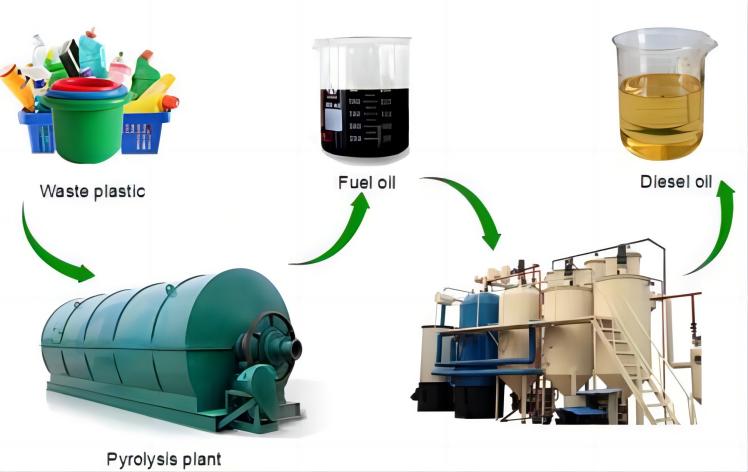
Conclusion
Converting waste plastic pyrolysis oil to diesel presents a promising approach to tackling plastic pollution and exploring alternative fuel sources. While significant challenges remain in terms of technology development, economic viability, and infrastructure integration, ongoing research and collaborative efforts offer a path forward. By overcoming these hurdles, waste plastic to diesel conversion has the potential to create a more sustainable future for waste management and the transportation sector.


